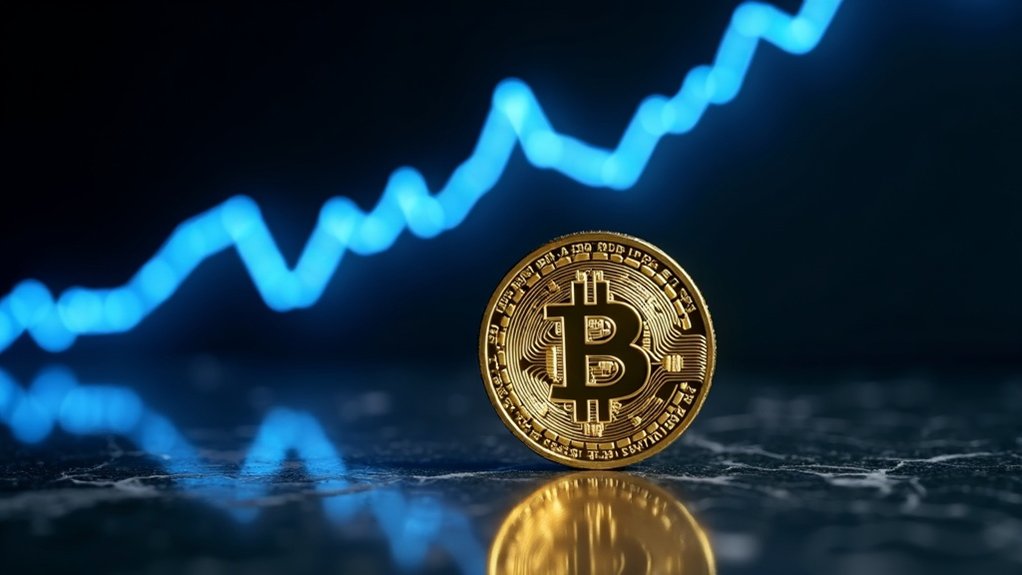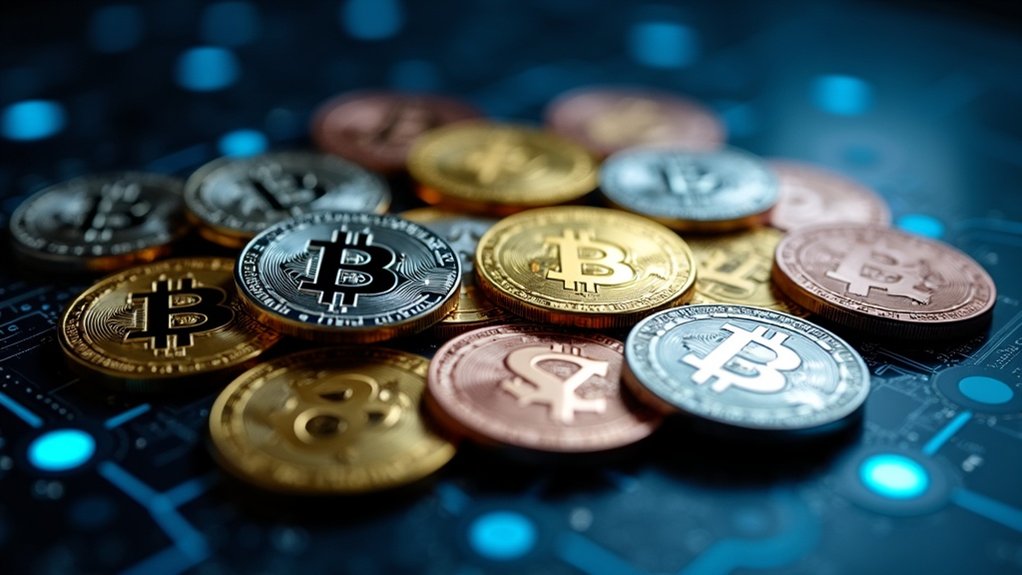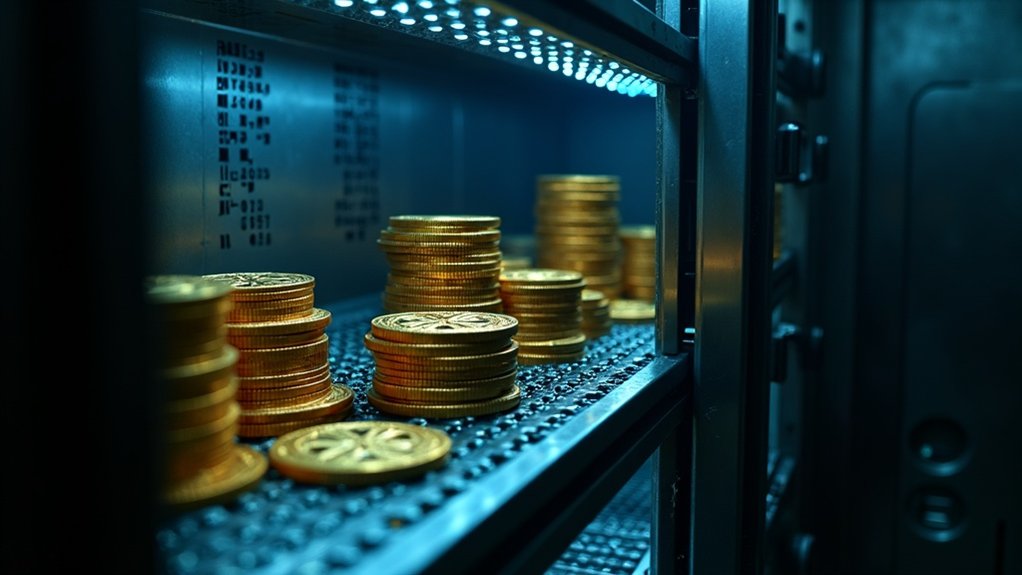The term “bear market” comes from an 18th-century practice of “selling the bear’s skin before catching the bear”—essentially selling assets you don’t own yet. First recorded in 1709, these sketchy speculators were called “bearskin jobbers,” later just “bears.” The symbolism works perfectly. Bears swipe downward (like falling prices) and hibernate (like slowing economic activity). Markets must drop 20% to earn the title. The animal metaphor stuck for a reason.
When markets tumble and investors panic, the term “bear market” gets tossed around like confetti at a parade. But why a bear? The term actually has roots dating back over three centuries. In 1709, British publisher Richard Steele documented the phrase “selling a bear,” which referred to selling something you didn’t own yet. Kind of a sketchy business practice, if you ask me.
Market slang has surprising origins. “Bear market” comes from 18th-century speculators selling assets they didn’t actually own yet.
The expression came from an old proverb warning against “selling the bear’s skin before catching the bear.” Makes sense. Don’t count your chickens, don’t sell your bearskins. Same idea. These early market speculators betting on price declines became known as “bears” – or more specifically, “bearskin jobbers.” That’s quite a mouthful, so “bears” stuck around instead.
Think about how bears attack – they swipe downward with their massive paws. This physical motion mirrors falling stock prices. Convenient, right? Bears also hibernate, becoming sluggish and inactive, much like a market that’s lost its momentum. The bear’s hibernation perfectly symbolizes the reduced economic activity characteristic of market downturns. Not exactly subtle symbolism. The term gained widespread usage during discussions about the South Sea Company in the early 1700s as Britain tried to manage its national debt through share issuance.
Today, we define a bear market as a decline of at least 20% from recent highs. These downturns typically last around 13 months and can result in losses between 20% and 47%. Brutal. The Great Depression, 2008 financial crisis, and 2020 COVID crash all qualify as textbook examples. Nobody sends greeting cards to commemorate these events. During these periods, corporate earnings tend to fall significantly.
The psychology behind bear markets reflects the animal too. Investors get defensive, cautious, almost hibernation-like. They retreat, sell assets, and wait for winter to pass. The whole market seems to slow down, trapped in a cycle of pessimism.
Over time, the terminology evolved from describing short-term price movements to broader market trends. By the early 20th century, market theorists like Charles Dow had formalized the definition, looking for patterns of lower lows to confirm the bearish state.
Frequently Asked Questions
How Long Does a Typical Bear Market Last?
A typical bear market lasts between 9 and 15 months.
Different sources give slightly different averages. Hartford Funds says about 9.6 months (289 days), while Russell Investments puts it at 15 months.
Vanguard splits the difference at roughly 1 year and 3 months.
University of Idaho’s data shows 1.3 years on average from 1926 to 2019.
Pretty predictable cycle, really. They come, they go. Markets always do their thing.
What Are the Best Investments During a Bear Market?
During bear markets, defensive stocks and dividend-payers typically outperform.
Think utilities, consumer staples, and healthcare—stuff people need regardless of economic conditions.
Bonds, especially high-quality government issues, often move inversely to stocks.
Smart money diversifies across uncorrelated asset classes.
Many investors use dollar-cost averaging to buy incrementally as markets fall.
Cash isn’t trash during these periods either.
It preserves capital and provides dry powder for when valuations become attractive.
No magic bullets here, folks.
Can Individual Sectors Experience Bear Markets Independently?
Yes, individual sectors absolutely can experience bear markets independently. Energy stocks might tank 25% while tech soars. It happens all the time.
Sector-specific issues like new regulations, technological disruption, or commodity price swings can hammer one industry while others remain unscathed. Take 2020 – airlines and hospitality crashed into bear territory while tech stocks partied.
Diversification exists for a reason. Some sectors can wallow in bear market territory for years while the broader indexes hit record highs.
How Do Bear Markets Affect Employment Rates?
Bear markets hit jobs hard. When stocks tank, companies freak out and start cutting costs.
First thing to go? People. Unemployment rates climb as businesses slash workforces to stay afloat. Financial and retail sectors get hammered worst. Manufacturing jobs vanish. Even tech isn’t safe.
Meanwhile, healthcare sometimes holds steady. The real kick in the teeth? Employment recovery lags behind market rebounds—companies are paranoid about rehiring too quickly.
It’s a nasty cycle: falling markets, fewer jobs, less spending, repeat.
Are There Warning Signs Before a Bear Market Begins?
Yes, several warning signs typically precede bear markets.
Technical indicators like declining breadth (fewer stocks trading above moving averages) and moving average crossovers flash early warnings. The bond market often signals trouble first—inverted yield curves and widening credit spreads are classic red flags.
Extreme investor optimism, paradoxically, can signal an approaching downturn. Market volatility usually increases. Leading Economic Indicators often deteriorate before full-blown bear markets emerge.
None are foolproof individually, but together they paint a picture. The market rarely crashes without warning.









